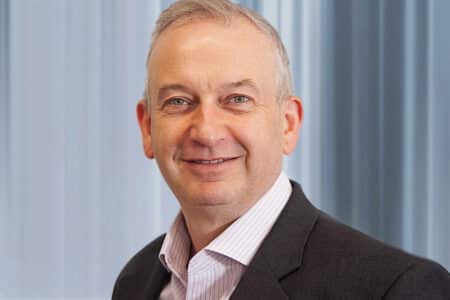Kepler Cheuvreux promotes two at New York office
Kepler Cheuvreux has made two senior US appointments, promoting Chris Carr as deputy head of North America and naming Khaled Yusufi as US hedge fund sales lead.
The two report to Hugo Sarkis, managing director and global head of equities sales, and are based in the firm’s New York office.
Carr has more than 15 years of industry experience, and has been with Kepler Cheuvreux’s European equity sales division since 2018. Prior to this, he was part of the institutional European equity sales team at Macquarie Group, based in Sydney.
Yusufi joins the company from Berenberg Capital Markets, where he handled European and US equity sales for the Tristate area, South Florida and the West Coast. He also spent five years as a UK specialist for equity sales at Peel Hunt, and was vice president of Canaccord Genuity between 2015 and 2016.
Commenting via LinkedIn, Kepler Cheuvreux stated: “Strategic hires and reinforced management presence in New York City aim at consolidating our North American market share gains, foster growth of new talents and expand the footprint of our growing US operations.”
©Markets Media Europe 2024
From the Floor at FIX Asia: Thomas Taw on the Japanese equities explosion
Global Trading editor Laurie McAughtry sat down with Thomas Taw, head of investment strategy for APAC at BlackRock, to discuss the breaking boom in Japanese equities – what’s driving it, who’s benefiting from it, and how international investors can best access the market…
© Markets Media 2024.
ICE accepts SEC penalty for regulatory reporting failure
The Intercontinental Exchange (ICE) has agreed to pay a US$10 million penalty to settle charges that it caused nine wholly-owned subsidiaries to fail to inform the SEC of a cyber intrusion in 2021.
The SEC stated that in April 2021 a third party informed ICE that it was potentially impacted by a system intrusion as a result of a vulnerability in its virtual private network (VPN). This was investigated by the group, the SEC stated, which found that malicious code had been inserted into a VPN used to remotely access the group’ corporate network.
However, the results of this investigation were not reported to legal and compliance officials at the exchange’s subsidiaries – in violation of internal cyber incident reporting procedures. As a result, these subsidiaries did not properly assess the intrusion or contact SEC staff in line with Regulation SCI requirements.
The subsidiaries involved in the case were Archipelago Trading Services, the New York Stock Exchange; NYSE American, NYSE Arca, ICE Clear Credit, ICE Clear Europe, NYSE Chicago, NYSE National and the Securities Industry Automation Corporation. The nine organisations and ICE agreed to a cease-and-desist order from the SEC, alongside the US$10 million penalty to ICE.
Gurbir Grewal, director of the SEC’s division of enforcement, commented: “The respondents in today’s enforcement action include the world’s largest stock exchange and a number of other prominent intermediaries that, given their roles in our markets, are subject to strict reporting requirements when they experience cyber events. Under Reg SCI, they have to immediately notify the SEC of cyber intrusions into relevant systems that they cannot reasonably estimate to be de minimis events right away. The reasoning behind the rule is simple: if the SEC receives multiple reports across a number of these types of entities, then it can take swift steps to protect markets and investors.”
He continued: “Here, the respondents subject to Reg SCI failed to notify the SEC of the intrusion at issue as required. Rather, it was commission staff that contacted the respondents in the process of assessing reports of similar cyber vulnerabilities. As alleged in the order, they instead took four days to assess its impact and internally conclude it was a de minimis event. When it comes to cybersecurity, especially events at critical market intermediaries, every second counts and four days can be an eternity.”
©Markets Media Europe 2024
Meritsoft integrates Taskize platform to enhance settlement efficiency
Cognizant subsidiary Meritsoft has integrated Taskize’s collaboration and workflow platform with its cross-asset Trade Tracking and Exception Manager (TTEM), allowing operations teams to rapidly address issues that might otherwise lead to failing trades.
The integration is designed to enable faster query resolution and reduce trade settlement fails, just as the US, Canada, Mexico and Argentina markets ready themselves for the shortening of the settlement cycle to T+1.
Meritsoft’s TTEM tracks the trade lifecycle to provide near real-time trade matching and settlement status updates, enabling users to identify at-risk trades and take necessary action internally or externally to ensure timely matching. The Taskize platform is used by more than 600 banking and financial firms in more than 88 countries and provides a secure workspace that brings financial operations professionals together to resolve queries.
TTEM users can initiate a trade settlement query in the TTEM Trade Window, simultaneously creating a secure workspace in the Taskize platform. The Taskize platform will connect the TTEM user to the most appropriate individual for resolving the query at the counterparty. TTEM users can interact with counterparties regardless of the communication tool they use without leaving the system.
Based on predefined rules, TTEM AI uses historical trade matching and settlement data combined with current live lifecycle statuses to initiate queries in Taskize without user input, further increasing the efficiency of the platform.

Daniel Carpenter, CEO of Meritsoft, said: “The process of manually identifying and intervening to prevent or resolve a failed trade takes significant operational resources and all too often relies on a web of email and phone communication. In the context of T+1 and growing pressure to resolve settlement issues quickly, the integration of Taskize into our trade tracking and exception management system is a significant step in helping market participants to streamline their settlement processes.”
Taskize CEO James Pike said: “Financial markets are becoming more complex and interconnected; as trading volumes increase, new regulations are implemented, and new markets rise to the fore. In this context, interoperability of post-trade systems is essential. Our integration with Meritsoft is a testament to our commitment to connecting front and back-office teams, enabling the smarter allocation of work to speed up time consuming manual exception resolution tasks and, as a result, navigate the increasingly complex market environment.”
©Markets Media Europe 2024
Swissquote partners with B2C2 to deepen liquidity on SQX exchange
B2C2, an institutional liquidity provider for digital assets, has partnered with Swissquote, to deepen liquidity on Swissquote’s SQX exchange.
B2C2’s presence on SQX is designed to expand the already deep liquidity available to traders, while SQX opens a new stream of market participants to B2C2’s trading ecosystem.

Jan De Schepper, CSO of Swissquote, said: “SQX has proven itself as the biggest and strongest digital assets exchange in Switzerland leading with greater liquidity and faster execution for our customers, strengthening our position as a recognised leader in crypto trading. We are delighted to have B2C2 as a strategic partner at our side. Together, we are committed to providing superior execution, enhanced transparency and an even better overall trading experience.”
Thomas Restout, group CEO of B2C2, said: “We are excited to collaborate with Swissquote, a major financial services provider with its extensive client footprint. We are pleased to deepen liquidity on the SQX exchange, providing clients with enhanced trading opportunities and reinforcing our competitive edge in the industry. Together, we are poised to unlock new growth avenues through liquidity solutions.”
SQX is a central limit order book (CLOB) providing deep liquidity as well as a way to trade cryptocurrencies to a range of market participants. Users can trade, hold and transfer actual crypto assets in their Swissquote account, backed by the security of a regulated Swiss bank.
©Markets Media Europe 2024
IPC and VoxSmart partner on real-time transcription technology
Communications and connectivity solutions provider IPC has partnered with communications surveillance technology firm VoxSmart to offer enhanced financial transcription technology.
The product is able to transcribe at 50 times the speed of previous offerings, the firms stated, and covers all financial languages. Developed in light of increased regulatory scrutiny around communications reporting, the solution will allow for greater accuracy and more robust processes, they added.
Front-office trading desks and sales teams will be able to convert audio into structured data in real-time, granting insights into trading blotters, order management systems and customer relationship management applications.
In turn, this will facilitate the development and implementation of proprietary large language models and natural language processing applications, the companies said.
Oliver Blower, CEO of VoxSmart, commented: “Voice-based communications are the lifeblood of many over-the-counter markets. Until now, they’ve been blind spots for many firms, posing challenges not just for compliance monitoring but also for uncovering valuable business insights.
“Our partnership with IPC seeks to change that, equipping financial institutions with the ability to effortlessly meet evolving compliance requirements while gaining a competitive edge by bridging communication gaps in rapidly expanding markets.”
James Tonks, senior vice president for partner development at IPC, added: “By combining our secure, compliant communication solutions with VoxSmart’s advanced AI-driven transcription technology, we are not only enhancing compliance capabilities but also empowering our clients with unprecedented real-time insights and operational efficiency.”
©Markets Media Europe 2024
Bloomberg makes proprietary alternative data available to quants
Bloomberg has made its proprietary Bloomberg Second Measure (BSM) transaction data analytics feeds available via Bloomberg Data License.
Data professionals and quantitative researchers can now connect this alternative dataset with Bloomberg’s more traditional Data License content.
Drawn from billions of US consumer credit card and debit card transactions, the BSM data analytics feeds deliver insights into company performance and consumer trends in near-real-time at a 3-day lag. The transaction data comes from a subset of a US consumer panel that includes more than 20 million consumers, and covers more than 3,000 public and private companies and more than 4,000 brands across industries.

Tony McManus, global head of enterprise data, Bloomberg, said: “By continuing to build out our interconnected suite of company research products, Bloomberg is a catalyst for change to the typically complex quant workflow that requires sourcing and organizing datasets from multiple providers.
“Delivering our proprietary alternative data directly alongside our traditional financial data through Data License allows quants and research analysts to make efficient, better-informed market projections with unique insights.”
Richard Lai, global head of alternative data, Bloomberg, said: “Making our Bloomberg Second Measure transaction data analytics feeds available for use across the enterprise with Data License is the next step in our effort to lower the barrier to entry for investment analysts to use alternative data for generating differentiated insights.”
Customers can browse, examine and use enterprise datasets at data.bloomberg.com or through DATA <GO> on the Bloomberg Terminal, and access this content via a REST API, SFTP or natively in all major cloud providers.
©Markets Media Europe 2024















